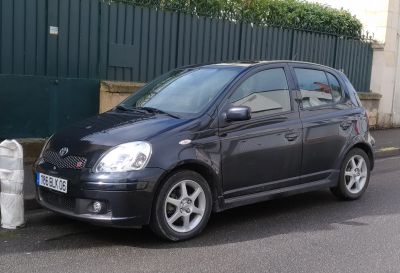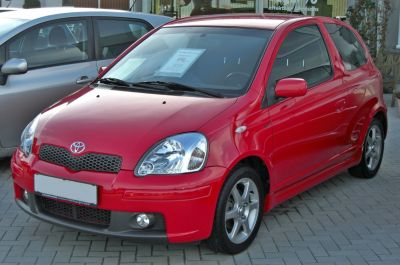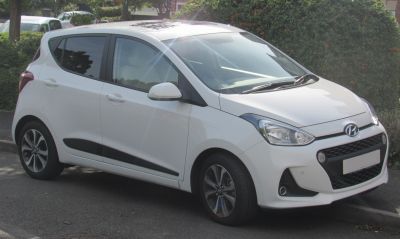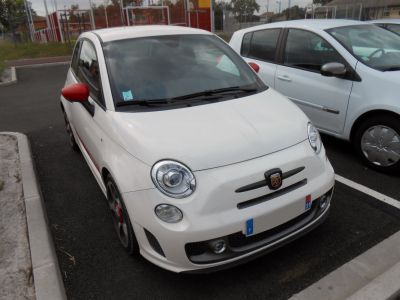 2013 Hyundai i10 II Dimensions, Size & Specs
2013 Hyundai i10 II Dimensions, Size & SpecsMeasurements of the 2013 Hyundai i10 II, engineered for optimal performance and comfort
| Dimensions | |
|---|---|
| Length: | 3665 mm144.3 in12.0 ft |
| Width: | 1660 mm65.4 in5.4 ft |
| Height: | 1500 mm59.1 in4.9 ft |
| Trunk Capacity: | 252 liter8.9 cu ft |
| Trunk Capacity (Max): | 1046 liter36.9 cu ft |
| Weight Specifications | |
| Curb Weight: | 933-989 kg2057-2180 lbs |
| Maximal permitted Weight: | 1420-1470 kg3131-3241 lbs |
| Tire Specifications | |
| Rims Sizes: | 13-inch rims:
|
| Tire Sizes: |
|
The Hyundai i10 II, produced between 2013 and 2016, is a compact hatchback designed for efficient urban driving while offering practical interior space. Measuring 3665 mm (144.3 inches) in length, 1660 mm (65.4 inches) in width, and 1500 mm (59.1 inches) in height, it fits comfortably into the city car segment, making it easy to maneuver and park in tight spaces. The curb weight of the vehicle ranges between 933 kg and 989 kg (2057 - 2180 lbs), depending on specific configurations, while its maximum weight capacity extends from 1420 kg to 1470 kg (3130 - 3241 lbs), ensuring sufficient load capacity for everyday use.
The Hyundai i10 II offers a practical luggage capacity of 252 liters (8.9 cubic feet) with the rear seats in place, expanding to a generous 1046 liters (36.9 cubic feet) when the rear seats are folded down. This feature provides versatility for carrying larger cargo, suitable for shopping, travel, or leisure activities. The vehicle rides on various rim sizes including 4.5J x 13, 5.5J x 14, 6.0J x 15, with tire sizes ranging from 155/70 R13 to 185/55 R15, contributing to a balanced combination of ride comfort and handling stability.
Overall, the Hyundai i10 II is a well-sized hatchback for drivers seeking a compact yet spacious car. It blends efficient dimensions with practical weight and luggage capacity, positioning it as a strong contender in the small city car market. Its size and flexibility make it ideal for daily commuting and occasional longer trips, providing a comfortable cabin space while maintaining economical operation.
Discover the standout features that make the 2013 Hyundai i10 II a leader in its class
Have a question? Please check our knowledgebase first.
The Hyundai i10 II, produced between 2013 and 2016, has a length of 3665 mm (144.3 inches), a width of 1660 mm (65.4 inches), and a height of 1500 mm (59.1 inches). These compact dimensions place it firmly in the city hatchback segment, making it ideal for urban driving and easy parking.
The curb weight of the Hyundai i10 II ranges between 933 kg to 989 kg (2057 to 2181 lbs), depending on the specific trim and equipment. Its maximum permissible weight varies from 1420 kg to 1470 kg (3130 to 3240 lbs), allowing for passengers and cargo within that limit, facilitating safe and efficient driving.
The Hyundai i10 II offers a luggage capacity of 252 liters (8.9 cubic feet) when the rear seats are in the upright position. When the rear seats are folded down, this capacity expands significantly to 1046 liters (36.9 cubic feet), providing ample storage space for larger cargo or luggage during travel.
The Hyundai i10 II supports a variety of tire and rim sizes to cater to different driving preferences and conditions. Rim sizes include 4.5J x 13, 5.5J x 14, 6.0J x 15, while tire sizes compatible with the vehicle are 155/70 R13, 175/65 R14, and 185/55 R15. These sizes offer a balance between comfort, handling, and fuel efficiency.
With its compact dimensions of 3665 mm (144.3 inches) in length and 1660 mm (65.4 inches) in width, the Hyundai i10 II is well-suited to fit comfortably in a standard home garage. Most standard garages have a width of around 2400 mm to 3000 mm (94.5 to 118 inches) and a length of 4800 mm (189 inches), so this hatchback leaves ample space for opening doors and maneuvering inside the garage.
Compared to the first-generation Hyundai i10, the i10 II is slightly larger and more refined. The previous generation measured approximately 3565 mm (140.35 inches) in length, significantly shorter than the 3665 mm (144.3 inches) of the second gen. This increase in size provides more interior space and enhanced comfort. The width and height have also been marginally increased, improving passenger room and overall practicality.
The Hyundai i10 II holds a competitive position among city hatchbacks. It is slightly larger than the Toyota Aygo, which is around 3455 mm (136 inches) long, offering more interior space. The Kia Picanto is similar in size, measuring roughly 3595 mm (141.5 inches) in length. The i10 II's larger luggage capacity and slightly wider stance give it an advantage in comfort and practicality compared to many rivals in the subcompact segment.
The Hyundai i10 II introduced a modern, streamlined design with smooth curves and a more aerodynamic shape compared to its predecessor. It features a spacious cabin with ergonomic controls, improved safety features, and upgraded technology options for its class. Its compact yet roomy interior makes it an ideal choice for urban commuters seeking efficiency without sacrificing comfort.
Yes, the Hyundai i10 II is designed with city driving in mind. It typically offers excellent fuel efficiency due to its lightweight (curb weight between 933 and 989 kg) and small, efficient engine options. Its compact size helps with maneuvering through tight urban spaces and makes parking easier, all while maintaining good fuel economy to help lower running costs.
The Hyundai i10 II comfortably seats five passengers with a well-utilized cabin space for a car of its size. The interior packaging emphasizes maximizing passenger comfort within its compact footprint. Despite its small exterior dimensions — 3665 mm long, 1660 mm wide, and 1500 mm tall — the cabin offers adequate headroom and legroom for its class, making it suitable for small families or urban commuters.
Discover similar sized cars.

| Production: | 1998-2008 |
|---|---|
| Model Year: | 1999 |
| Length: | 3660 mm144.1 in |
| Width: | 1625 mm64.0 in |
| Height: | 1485 mm58.5 in |

| Production: | 1998-2008 |
|---|---|
| Model Year: | 1998 |
| Length: | 3660 mm144.1 in |
| Width: | 1625 mm64.0 in |
| Height: | 1480 mm58.3 in |

| Production: | 2003-2005 |
|---|---|
| Model Year: | 2003 |
| Length: | 3640-3660 mm143.3-144.1 in |
| Width: | 1660 mm65.4 in |
| Height: | 1470-1500 mm57.9-59.1 in |

| Production: | 2003-2005 |
|---|---|
| Model Year: | 2003 |
| Length: | 3640-3660 mm143.3-144.1 in |
| Width: | 1660 mm65.4 in |
| Height: | 1470-1500 mm57.9-59.1 in |

| Production: | 2016-2019 |
|---|---|
| Model Year: | 2016 |
| Length: | 3628 mm142.8 in |
| Width: | 1910 mm75.2 in |
| Height: | 1516 mm59.7 in |

| Production: | 2016-2019 |
|---|---|
| Model Year: | 2016 |
| Length: | 3665 mm144.3 in |
| Width: | 1660 mm65.4 in |
| Height: | 1500 mm59.1 in |

| Production: | 2016-present |
|---|---|
| Model Year: | 2016 |
| Length: | 3660 mm144.1 in |
| Width: | 1893 mm74.5 in |
| Height: | 1490 mm58.7 in |

| Production: | 2012-2016 |
|---|---|
| Model Year: | 2012 |
| Length: | 3657 mm144.0 in |
| Width: | 1893 mm74.5 in |
| Height: | 1485 mm58.5 in |
